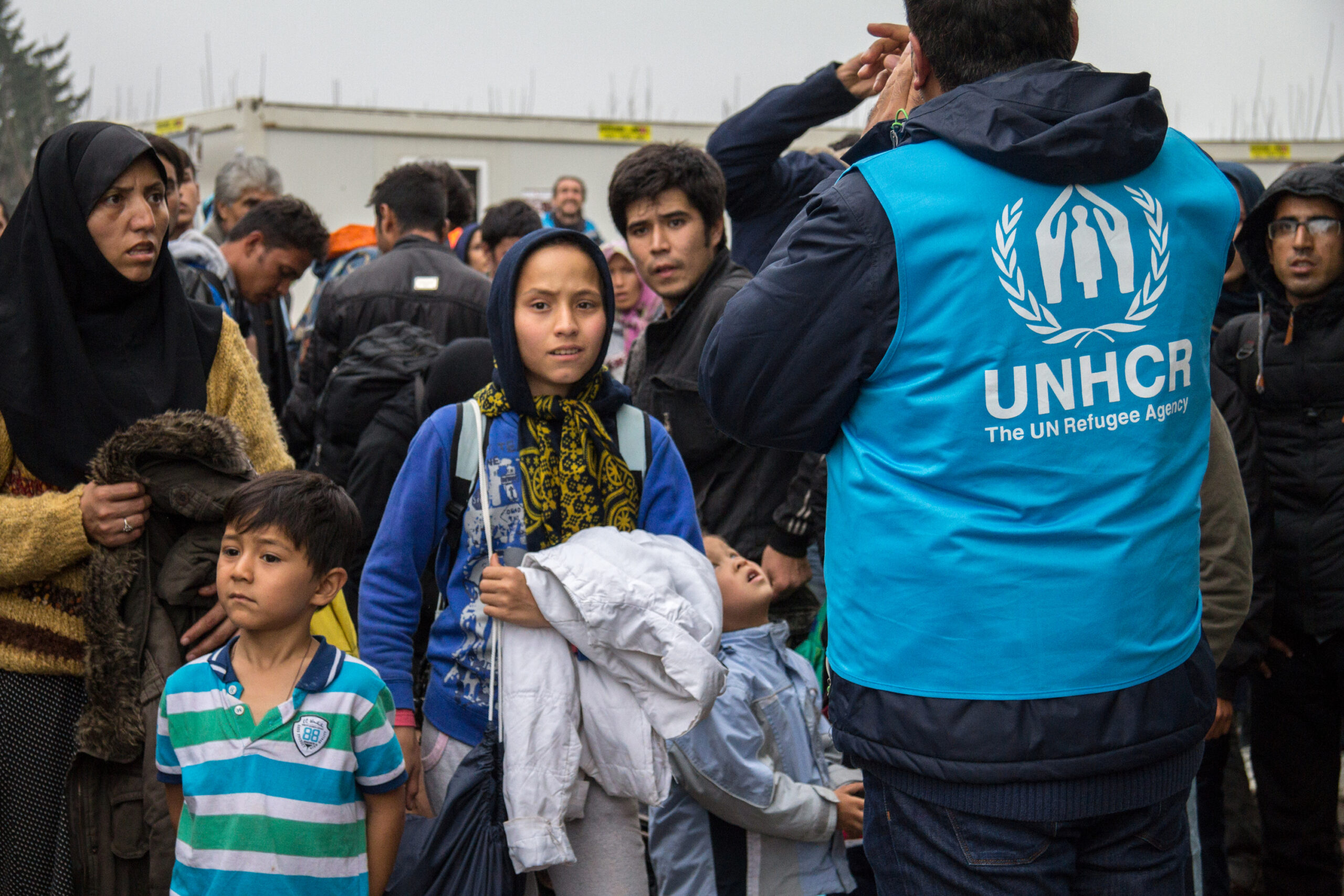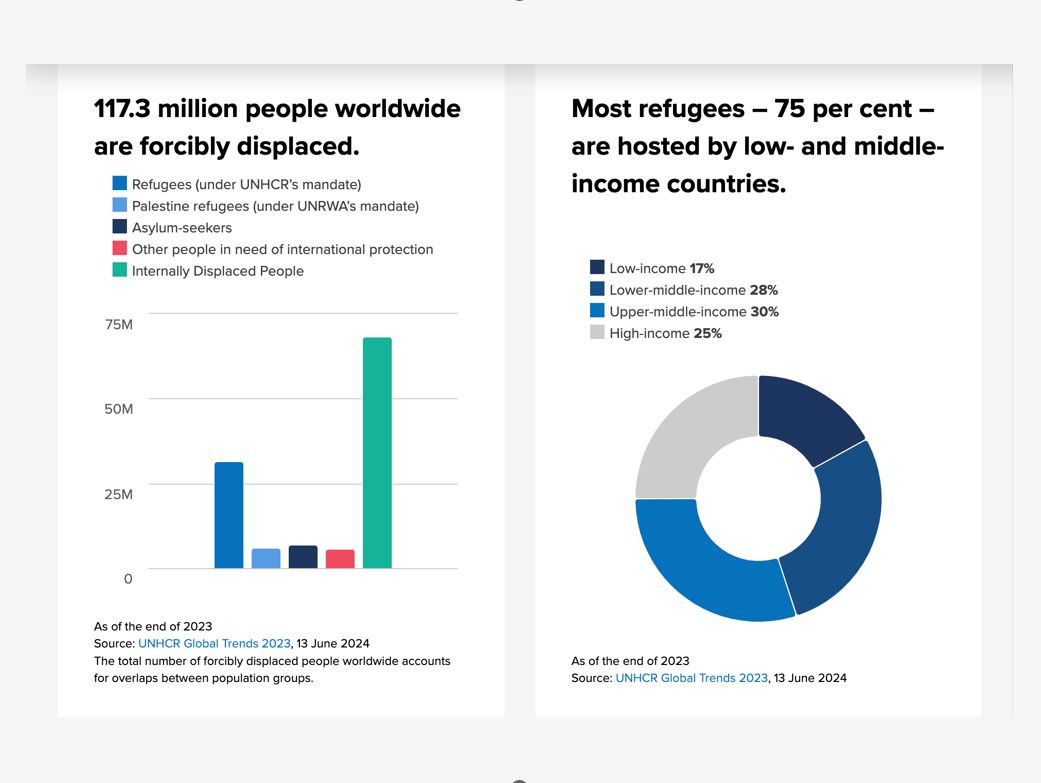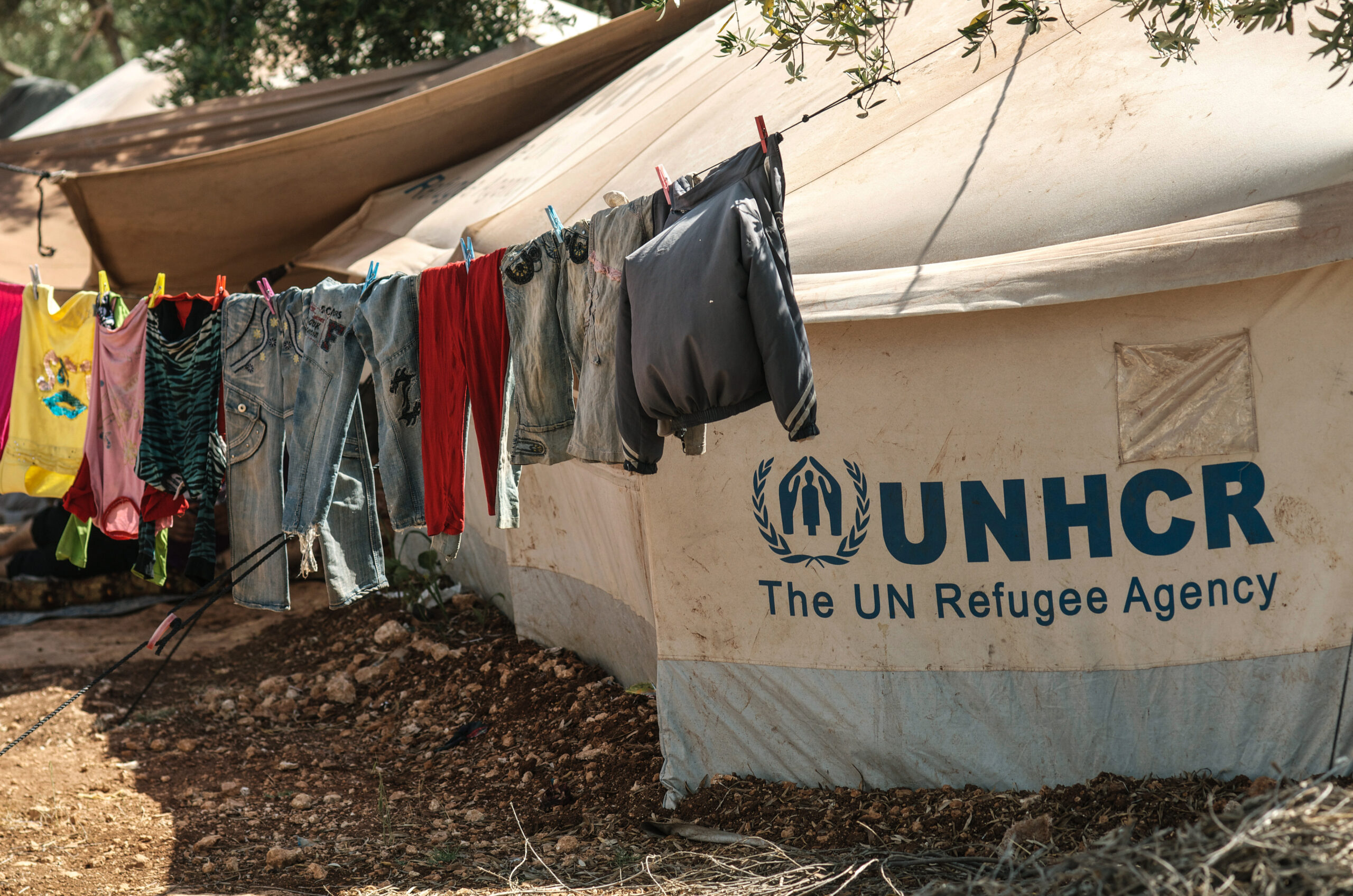I want to know the world distribution map of refugee camps.

TEXT : Ben Godflay
According to a report by the United Nations High Commissioner for Refugees (UNHCR), the number of people displaced by conflict and persecution reached 120 million as of May 2024. While there are various reasons people are forced to leave their familiar homes, such as civil wars and persecution, statistics reveal that refugees tend to originate from and are hosted in certain regions and countries. Many international conflicts are prolonged. By reviewing the global distribution of refugee camps, we can consider the challenges of refugee relief and potential solutions for improvement.
Every year, the UNHCR releases an annual report on refugee statistics, including those under the protection of the United Nations Relief and Works Agency for Palestine Refugees in the Near East (UNRWA). According to the 2023 report, the global number of refugees, which had remained between 40 to 50 million since 1993, began to rise sharply after 2011. As of May 2024, the figure has reached approximately 120 million. Comparing this to 80 million in 2020 and 65 million in 2015, the worsening situation is clear.
Approximately 70% of refugees and people in need of international protection have migrated to neighboring countries. As a result, refugee camps are often located around conflict zones. For example, during the fighting that erupted in Sudan in 2023, around 1.9 million people fled to nearby countries such as Chad, Ethiopia, South Sudan, and Egypt. In the case of the Rohingya refugees fleeing persecution in Myanmar, the largest camp is located in southern Bangladesh. Similarly, more than 6 million refugees displaced by the Syrian civil war have sought shelter in refugee camps in neighboring Jordan. Camps housing those fleeing the Ukraine crisis can also be found in neighboring Poland.

Countries of origin and host countries for refugees tend to be concentrated in specific nations. According to 2023 statistics, Afghanistan (6.4 million), Syria (6.4 million), Venezuela (6.1 million), Ukraine (6 million), and South Sudan (2.3 million) account for more than 70% of all refugees. In 2020, Syria, Venezuela, Afghanistan, Sudan, and Myanmar made up 70% of the total, while in 2015, Syria, Afghanistan, and Somalia accounted for half of all refugees.
While refugees are emerging from conflicts like the one in Ukraine, there are countries like Afghanistan and Syria that continuously generate refugees. Host countries for refugees are also concentrated in specific nations. In 2023, Iran (3.8 million), Turkey (3.3 million), Colombia (2.9 million), Germany (2.6 million), and Pakistan (2 million) together hosted nearly 40% of the world's refugees. Turkey and Pakistan were also among the top host countries in 2020 and 2015.
From the above numbers, two things become clear. One is the increasing burden on specific countries. The other is the prolonged displacement. The influx of refugees into certain countries can lead to employment issues and job instability. Additionally, many international conflicts are prolonged, such as the Syrian civil war, which has lasted over 10 years, and Afghanistan, where conflict has persisted for over 30 years. The extended nature of displacement leads to waning international attention and continues to create stateless people, including children and even grandchildren.

For the growing number of refugees to regain self-reliance, it is necessary to take step-by-step support measures such as (1) protection of life, (2) provision of educational and employment opportunities, and (3) securing nationality. In addition to providing shelter for refugees, the UNHCR offers educational programs and protects stateless individuals based on the "Refugee Convention" relating to the status of refugees. Amid the rapid increase in refugee numbers, more than 1 million refugees and over 5 million internally displaced persons were able to return to their homes in 2023 thanks to this support. Even for those who cannot return to their homeland, many have been able to obtain nationality in a new country and embark on a second life. The global community must work toward both stopping the conflicts that create refugees and providing support for those who cannot return to their home countries. The goal is for the number of refugees and refugee camps to eventually become zero, and this is something the world as a whole should work on as two interconnected efforts.
